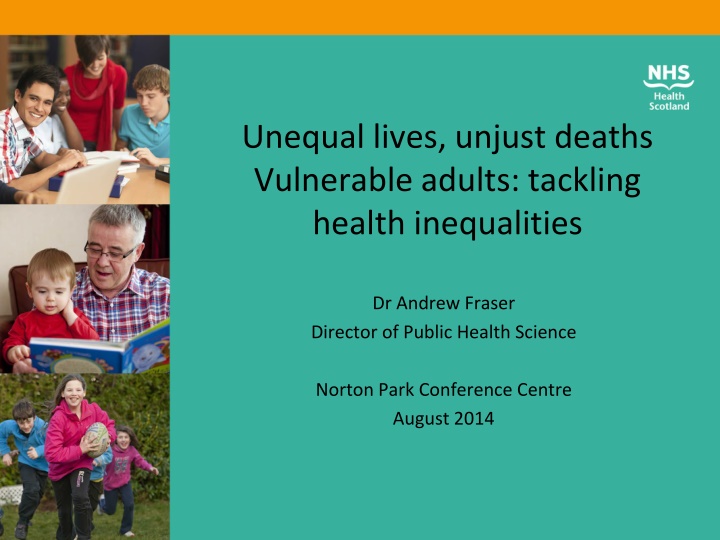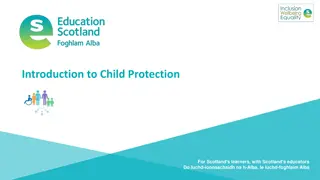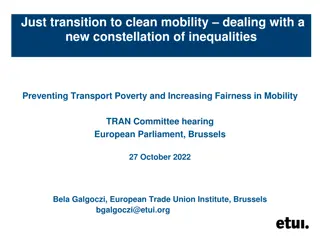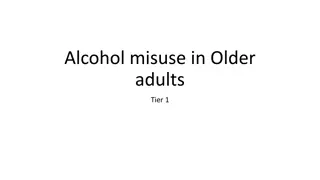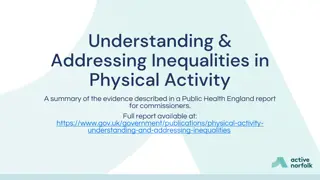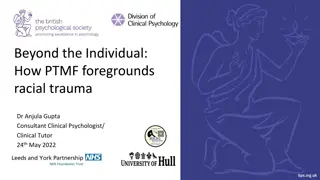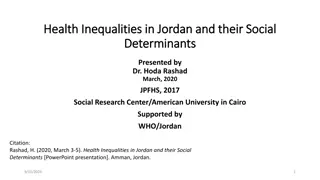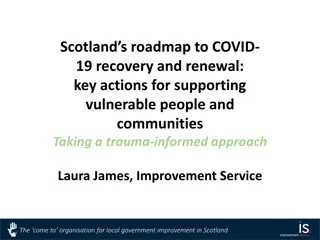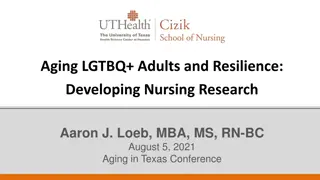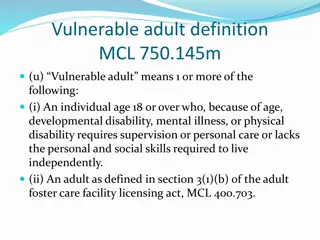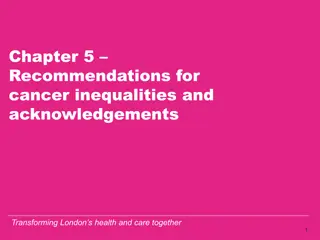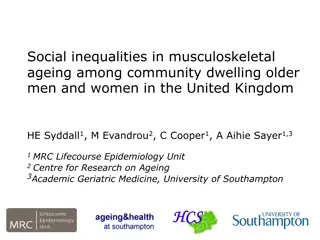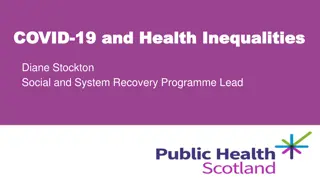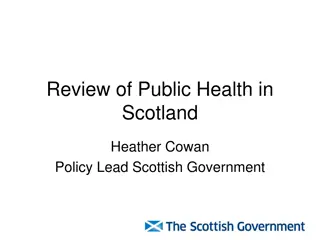Addressing Health Inequalities Among Vulnerable Adults in Scotland
Exploring the impact of health inequalities on vulnerable adults in Scotland, this data-rich presentation delves into the disparities in life expectancy, mortality rates, and risk factors faced by various marginalized groups. Highlighting the stark differences in health outcomes, it sheds light on the challenges faced by individuals such as asylum seekers, prisoners, and the homeless, emphasizing the urgent need for targeted interventions to tackle these disparities and promote health equity.
Download Presentation

Please find below an Image/Link to download the presentation.
The content on the website is provided AS IS for your information and personal use only. It may not be sold, licensed, or shared on other websites without obtaining consent from the author.If you encounter any issues during the download, it is possible that the publisher has removed the file from their server.
You are allowed to download the files provided on this website for personal or commercial use, subject to the condition that they are used lawfully. All files are the property of their respective owners.
The content on the website is provided AS IS for your information and personal use only. It may not be sold, licensed, or shared on other websites without obtaining consent from the author.
E N D
Presentation Transcript
Unequal lives, unjust deaths Vulnerable adults: tackling health inequalities Dr Andrew Fraser Director of Public Health Science Norton Park Conference Centre August 2014
Who are vulnerable adults? The law Adult Support and Protection (Scotland) Act 2007 adults who may be at risk of harm or neglect and who may not be able to protect themselves. Equality and Diversity groups protected characteristics Each group tends to experience poorer mental health, and higher (mortality) risks than the general populations Some exceptions Some examples
Age*, Asylum seekers and refugees, Carers, Disability* (mental and physical), Ethnicity*, Language, Literacy, Migrants, Poverty, Prisoners, Religion* and belief, Sex and gender*, Sexual orientation* From: Dimensions of diversity, NHS Health Scotland, 2010 * Equality Act, protected characteristics
Male life expectancy 75.8 years Hillhead St George s Cross Buchanan Street Jordanhill Hyndland Partick Charing Cross Exhibition Centre QUEEN STREET Anderston Argyll St. Govan Bridgeton St Enoch CENTRAL Ibrox Male life expectancy 61.9 years Cessnock Source: McCartney G. Illustrating Glasgow s health inequalities. JECH 2010; doi 10.1136/jech.2010.120451 .
The rising population Relative risk of mortality for adults imprisoned in Scotland for the first time 1996-2007, by cause and deprivation Health in Prisons Project Male 3.3 2.3 3.5 4.4 4.4 2.9 Female 7.5 5.6 11.4 22.2 19.0 9.3 All deaths All deaths (adj.deprivation) Suicide etc Homicide All drug related All alcohol related [n=4414 deaths, All significant 95% CI] Graham et al, 2011
Number of weeks between Prison Release and Death 40 35 30 25 Number of Deaths % Cumulative % 20 15 10 5 0 Within week one 1 to 4 weeks 5 to 8 weeks 9 to 12 weeks 13 to 16 weeks 17 to 20 weeks 21 to 24 weeks Source: NDRDD 2009 data, Scotland
Homelessness Kills Homeless death rate 4.5 times (3.2, matched with people from most deprived areas) Mean age at death 41: 42 yrs (men), 37 yrs (women) Cause of death drugs 20-fold, alcohol 5-fold & circulatory 2/3 intentional self-harm 8-fold, assault 7-fold Added risk of being homeless & dying drugs 7-fold, chest-related 3-fold, circulation 2-fold David Morrison, Int J Epidemiology 2009 Glasgow Cohort, av.age 32 in 2000, n=6323 homeless:12625 non-homeless controls followed for 5 years, 2:1 men
Self-reported limiting long-term illness (LLTI) rates by age and housing status Source: Thomas B. Homelessness kills: An analysis of the mortality of homeless people in early twenty-first century England. Crisis: London; 2013.
Mental health: Shorter life expectancy, 3 Scandinavian Countries
Burglar Bills Problem List Drugs - Addiction Drugs, Alcohol + Everything Drugs - Debt Accommodation Partner, Parents, Children Mental Health Past Behaviour Abuser and Abused Reading, Writing, Counting Teeth Smoking Employability Get a Job Effects on Victims
Multiple challenges Multi-morbidity Mental, Physical, Social dimensions to health Social and economic determinants The self- Family and relationships Communities Experience of services The services The causes of the causes
What is most and least effective in reducing health inequalities? Most likely to be effective Structural changes to the environment, legislation, regulatory policies, fiscal policies, income support, improving accessibility of public services, prioritising disadvantaged population groups, intensive support, and starting young. Least likely to be effective Interventions such as information-based campaigns, written materials, campaigns reliant on people opting in, campaigns/messages designed for the whole population, whole school health education approaches, approaches which involve significant price or other barriers, and housing or regeneration programmes that raise housing costs.
Unequal lives, unjust deaths Vulnerable adults: tackling health inequalities Dr Andrew Fraser andrew.fraser2@nhs.net Norton Park Conference Centre August 2014
